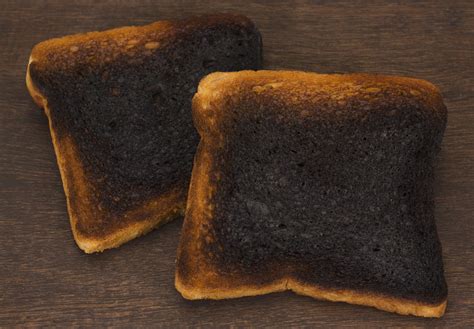Dude they are posting from Mastodon
This is a man who knows how to gling. He is glinging. Yesterday, he _____.
- 84 Posts
- 660 Comments

 19·2 days ago
19·2 days agoIn one of my dungeons, there was a trapped carpet which caused people who sat on it to belive they were riding a flying carpet. It was in fact an animated carpet, so the barbarian who believed he was flying around the castle was in fact just scooting forward an inch at a time

 22·2 days ago
22·2 days agoHammer of Dwarf Throwing.
Can only be attuned to by dwarves. As a bonus action, the user may expend a charge to be launched from the location of the hammer towards a target, leaving the hammer behind.
That would be hilarious, and 100% what the setting was meant for. Big open world to fill with shenanigans.
My last setting had regional apocalypse due to the collapse of their Roman Empire equivalent, which resulted in no national currency since the new feudal regime was so incoherent. There were, however, several local currencies that were gaining traction, such as:
- The goblins had a long-standing traditional currency system of specie coins, similar to that in the dnd handbook. However, anyone who wanted to mint currency could. This resulted in what could best be described as a deciduous economy. In the winter, goblin smiths would try to cheat the system by forging random gold, silver, and copper trinkets into coins to buy food with, resulting in rampant inflation. By the time spring rolls around and food starts becoming plentiful again, frustrated goblin smiths begin melting down their near-worthless coins into much more valuable jewelry and trinkets to sell, resulting in a period of rapid deflation until prices stabilize again in the fall. Often the values of the specie coins would inflate and deflate at different rates, resulting in periods where copper coins were more valuable than gold and silver coins but less valuable than bronze coins. Unsurprisingly, non-goblins tended not to bother with goblin currency.
- Most parts of the local Marches ran on a system of favors. I would have kept track of my player’s reputations as a sort of credit score, but i decided to ignore this after one player lost his mind at the idea of not being able to buy things with those dolla dolla bills he provably did not have.
- A currency system gaining popularity was formed in a local city, which resembled the British LSD system but where one pound was 360 pence, and the values of the other coins corresponded to the prime factors of 360. Very logical, and I am sure my problem player would have lost his damn mind at having to do actual math to buy things.
- The nobility did not need to bother with currency, and never have. They simply conducted barter in bulk, backed by favors and local prestige. Exchange rates were very stable. As a result, they tended to use whole 5-pound ingots of precious metals as a form of currency when barter would be unnecessarily time-consuming. However, they seemed to see barter as the more civilized form of trade, since you had to actually conduct diplomacy with your fellow nobility to make it happen, so currencies have had to overcome the stigma of being the uncivilized tool of goblins and peasants to become popular. This was, in fact, the main factor behind why a dominant currency had not emerged in the last century.

 1·3 days ago
1·3 days agoHonestly, same. I’ve got a Mastodon account that follows some of the smaller communities.

 1·3 days ago
1·3 days agoOh hey, a Mastodon user! Nice to see ya
Oh right I thought it was a broswer

 284·3 days ago
284·3 days agoNot much help to know what cup size you are if the bra companies are only pretending to be standardized
Does it have adblocker

 5·3 days ago
5·3 days agoBookmarking this

 123·5 days ago
123·5 days agoI’m just waiting for the people in the comments telling you that Poison Ivy isnt a bad guy because
- Lesbian
- Hot
- Ecoterrorism is good

 10·5 days ago
10·5 days agoI mean, same here, but if an influencer migrates from Twitter they usually bring their fans with them.

 3·5 days ago
3·5 days agoOne of those pillows that looks like an inflating phone battery.
Better idea: 3"*4" Magnetic viewing film, stored in a thoughtfuk card, which is wrapped in a box with 6"*6" thermochromatic film, which is itself is wrapped in a box with a roll of glow in the dark tape, and then given to them with another thoughtful card that holds a gift card to somewhere you think they would like. Basically a nesting set of tiny cool things that all cost about as much as the wrapping paper they are in.

 22·5 days ago
22·5 days agoI agree with the other commenter’s points, but one thing I think people forget to mention is that BlueSky feels like Twitter in a way Mastodon just doesn’t. When I am trying to pitch Mastodon to people, I usually compare it to Tumblr because the vibes are similar.
Mastodon is also flat out hostile to influencers, and by that I mean the platform is designed to be terrible to influencers. The lack of an alogarithm means you can’t game the system, no quote tweets means you get less opportunities to spread, no reply limiting means your notifications are going to be going nuts from the replies. The culture on Mastodon is difficult to game too, since people there expect thoughtful responses to their replies.
 5·7 days ago
5·7 days agoApparently the reason it is dark is because they tried to make it out of clay bricks in a damp part of the Nile.
Oh what a cutie. Get a pixelfed account and clog up my Mastodon feed with puppies! Please!

 6·8 days ago
6·8 days agoWell, what snapped me out was when I ran an experiment that proved how strong the placebo effect could be, which caused me to reflect on my beliefs and realize that literally all the Werewolf wizard powers I thought I had could be explained by the placebo effect. Naturally, I concluded that I couldnt trust anything my senses told me and spent a few days trying to figure out how to deal with the possibility of being a brain in a jar.
And of course, right after I’d rebuilt my entire conception of reality from first principles, that’s when I found out that some of the memories I had of things I was most proud of and defined myself by were provably false. So, as you would expect from me considering my calm and careful reaction to the placebo effect, I then decided that all my memories couldn’t be trusted.
So, can’t trust my senses, cant trust my memories. That’s pretty much all the things I can use to define myself. So, based on the lack of valid evidence I concluded that I do not exist.
And that’s how I stopped being a flat-earther wizard werewolf. Thankfully eventually I came around to agreeing with Descartes on the whole “I think, therefore I am” thing. After I climbed out of the psychological hole I dug over the next six months, I recovered with only a severely crippling fear of advertisements.

 3·8 days ago
3·8 days agoI believed there was a big hole in the north pole where the magnetic field comes out



I find it funny that you are only taking issue with it here, in the comments, not with the original post